QUESTIONS FOR CRAFTERS: Jennifer and Steve Hagey of Eugenix
Interview by Kim Hume
Jennifer and Steve Hagey have a crafty business – the couple are raising alpacas and harvesting the fibre to make a variety of products they sell from their website, alpacaeugenix.ca. Kim Hume interviewed Jenn and Steve at their home in Toronto.
Tell me about Eugenix. What is it? How did it start?
Jennifer: It all started about five years ago. We’d been married for one year. I was in a different job, and I was searching for something. We saw a commercial promoting alpacas. I was surprised that there was an animal in Canada that I’d never heard of. I researched them for about a year. We’d joke, ‘We should buy one,’ and then it became more serious. The real pull for us, Steve does computer work during the day from home, but he likes the outdoors, and he’s been threatening to move us to the country. So I said, if we’re moving to the country, I’m not going without animals.
The name Eugenix, how did that come about?
Steve: It’s based on selective breeding, inherent characteristics of the breed as it relates to alpaca genetics, which we’ve explained on the website. But we’re looking to re-brand ourselves.
Eugenix itself, is it about the fibre, the products or the alpacas?
We consider ourselves breeders. Everyone in the alpaca industry is focused on one goal, and that’s amazing fibre.
You both work full time. Are you planning to build this into a full-time business?
Steve: I think we’d like to keep our careers, and continue to do what we do, but in a different environment.
MORE ABOUT ALPACAS
Steve: Alpacas are easy-to-care-for animals. A large percentage of the breeders in Ontario still work full-time, except for the retirees. You go out in the morning, do a clean up in the stalls, feed them and you don’t have to go back out for the rest of the day. They’re not high-maintenance animals. All summer, they’re in pasture.
I would have thought you had to own a farm. I understand you board your alpacas. Did that come out of your research, that you could do this in a gradual way?
Steve: In the industry, it’s called agisting. The first farm visit we had, we weren’t aware of agisting, but we questioned why we couldn’t get started by creating a plan with Nancy, the owner of the first farm we visited, where we’d bring in a breeding male that she could utilize, and give us the opportunity to start building a herd and get involved in the industry. Some people never own a farm and know they are always going to board. Nancy was planning a trip to Saskatchewan to check out a herd. She knew we were interested in buying an animal, and that's how we found our first alpaca, Shaccoyo.
How many alpacas do you have now?
Jennifer: We have four. We started out with Shaccoyo, a herd sire or breeding male, which is very unusual in the industry. Most people buy a plot of land and start with a couple of females and go from there.
Steve: Shaccoyo, he has a great disposition and personality for an alpaca. Most are pretty indifferent. But he’ll come up and nuzzle your face.
Jennifer: He was our initial investment. We haven’t really sunk any more into it. We can also stud him out, though we haven’t yet. There’s a high saturation of breeding males in the industry.
Steve: When we joined, there were 50 or 60 members of Alpaca Ontario and now we’re 165 members.
Where is the farm? How often are you visiting?
Jennifer: We started out in Brantford, and this past December, we moved the animals to Quarry Hill Farms in Terra Cotta, which is 30 minutes north of here. We go once every two months or so.
FIBRE
Steve: Aplaca is a high-end fibre. It’s hypo-allergenic; there’s no lanolin. The weight-to-warmth ratio is really incredible, it’s warmer than wool. It’s got a low scale height, so there’s no itching. Anyone can wear alpaca without any allergic reaction. There’s also a great connection (between the products and the animals). When we go to shows, we have pictures on the table of the animals. People love to see that when you say, ‘This was made by him.’
What is the process for getting the fibre?
Steve: It’s like sheep; we shear them. Last year was our first with a professional shearer. We did 26 animals in a day. It was crazy, a lot of work. I was with the animals, and Jenn was skirting all the fibre as it came off.
What happens to the fibre?
Jennifer: Once we shear it, it goes into bags. We separate the colours, and then we take it to the mill and they process it into whatever we ask them to make. It could be raw fibre, for quilting or spinning, roving, yarn. There are as many yarns as you could think of, and then you can have batts of felt.
Steve: The mill we use is in Elora, Wellington Fibres. They have goats and they built a minimill on their site.
PRODUCTS
Tell me about your products, the things you’re making.
Jennifer: I was trying to focus on baby wear. We try and keep a low inventory, because it costs money to store it, and we don’t have storage, so.baby wear takes less storage and because we only had one animal to start with, we didn’t have a lot of fibre to work with, and I thought it was a growing area.
Steve: Alpaca is an ideal fibre for babies.
You have baby booties and hats by a knitter, and woven scarves for adults, which you’re making yourself.
Jennifer: I knew that I couldn’t learn to knit fast enough. I need to get better at spinning first. I wanted to learn weaving, and I found a course nearby at the Mimico Adult Learning Centre. I did that for a few semesters.
Steve: My mum and dad are avid garage salers. And sure enough, right after Jenn started the course, they found a tabletop loom.
How did you find your knitter?
Jennifer: We were running into people through shows, in stores and events, and I’m part of the Etobicoke Handweavers and Spinners Guild.
You’re selling products from your website. Are you doing other online sales?
Jennifer: I have an online shop on Etsy. I got in at the end of 2005, and not many people had heard of it yet. Now there are so many shops, it’s harder. I’ve sold things to people in Italy, The Netherlands, the United States. For our own site, we don’t have a shopping cart, but people can call us.
What’s next?
Jennifer: I’d like to get our items into a retailer, to have a few boutiques in Toronto that would carry our stuff. I’ve been thinking about doing wholesale in the future.
Meet Steve and Jennifer's Alpacas: Shaccoyo, Peanut, Desirae and Scout
on their website.
::::::::::::::::::::::
Kim Hume is crafty in her spare time when she's not busy on policy and advocacy for artists at ACTRA, the union for film and television performers in Canada. She's a maker of lamps and handmade cards and enthuses about crochet and felting.
Jennifer and Steve Hagey have a crafty business – the couple are raising alpacas and harvesting the fibre to make a variety of products they sell from their website, alpacaeugenix.ca. Kim Hume interviewed Jenn and Steve at their home in Toronto.
Tell me about Eugenix. What is it? How did it start?
Jennifer: It all started about five years ago. We’d been married for one year. I was in a different job, and I was searching for something. We saw a commercial promoting alpacas. I was surprised that there was an animal in Canada that I’d never heard of. I researched them for about a year. We’d joke, ‘We should buy one,’ and then it became more serious. The real pull for us, Steve does computer work during the day from home, but he likes the outdoors, and he’s been threatening to move us to the country. So I said, if we’re moving to the country, I’m not going without animals.
The name Eugenix, how did that come about?
Steve: It’s based on selective breeding, inherent characteristics of the breed as it relates to alpaca genetics, which we’ve explained on the website. But we’re looking to re-brand ourselves.
Eugenix itself, is it about the fibre, the products or the alpacas?
We consider ourselves breeders. Everyone in the alpaca industry is focused on one goal, and that’s amazing fibre.
You both work full time. Are you planning to build this into a full-time business?
Steve: I think we’d like to keep our careers, and continue to do what we do, but in a different environment.
MORE ABOUT ALPACAS
Steve: Alpacas are easy-to-care-for animals. A large percentage of the breeders in Ontario still work full-time, except for the retirees. You go out in the morning, do a clean up in the stalls, feed them and you don’t have to go back out for the rest of the day. They’re not high-maintenance animals. All summer, they’re in pasture.
I would have thought you had to own a farm. I understand you board your alpacas. Did that come out of your research, that you could do this in a gradual way?
Steve: In the industry, it’s called agisting. The first farm visit we had, we weren’t aware of agisting, but we questioned why we couldn’t get started by creating a plan with Nancy, the owner of the first farm we visited, where we’d bring in a breeding male that she could utilize, and give us the opportunity to start building a herd and get involved in the industry. Some people never own a farm and know they are always going to board. Nancy was planning a trip to Saskatchewan to check out a herd. She knew we were interested in buying an animal, and that's how we found our first alpaca, Shaccoyo.
How many alpacas do you have now?
Jennifer: We have four. We started out with Shaccoyo, a herd sire or breeding male, which is very unusual in the industry. Most people buy a plot of land and start with a couple of females and go from there.
Steve: Shaccoyo, he has a great disposition and personality for an alpaca. Most are pretty indifferent. But he’ll come up and nuzzle your face.
Jennifer: He was our initial investment. We haven’t really sunk any more into it. We can also stud him out, though we haven’t yet. There’s a high saturation of breeding males in the industry.
Steve: When we joined, there were 50 or 60 members of Alpaca Ontario and now we’re 165 members.
Where is the farm? How often are you visiting?
Jennifer: We started out in Brantford, and this past December, we moved the animals to Quarry Hill Farms in Terra Cotta, which is 30 minutes north of here. We go once every two months or so.
FIBRE
Steve: Aplaca is a high-end fibre. It’s hypo-allergenic; there’s no lanolin. The weight-to-warmth ratio is really incredible, it’s warmer than wool. It’s got a low scale height, so there’s no itching. Anyone can wear alpaca without any allergic reaction. There’s also a great connection (between the products and the animals). When we go to shows, we have pictures on the table of the animals. People love to see that when you say, ‘This was made by him.’
What is the process for getting the fibre?
Steve: It’s like sheep; we shear them. Last year was our first with a professional shearer. We did 26 animals in a day. It was crazy, a lot of work. I was with the animals, and Jenn was skirting all the fibre as it came off.
What happens to the fibre?
Jennifer: Once we shear it, it goes into bags. We separate the colours, and then we take it to the mill and they process it into whatever we ask them to make. It could be raw fibre, for quilting or spinning, roving, yarn. There are as many yarns as you could think of, and then you can have batts of felt.
Steve: The mill we use is in Elora, Wellington Fibres. They have goats and they built a minimill on their site.
PRODUCTS
Tell me about your products, the things you’re making.
Jennifer: I was trying to focus on baby wear. We try and keep a low inventory, because it costs money to store it, and we don’t have storage, so.baby wear takes less storage and because we only had one animal to start with, we didn’t have a lot of fibre to work with, and I thought it was a growing area.
Steve: Alpaca is an ideal fibre for babies.
You have baby booties and hats by a knitter, and woven scarves for adults, which you’re making yourself.
Jennifer: I knew that I couldn’t learn to knit fast enough. I need to get better at spinning first. I wanted to learn weaving, and I found a course nearby at the Mimico Adult Learning Centre. I did that for a few semesters.
Steve: My mum and dad are avid garage salers. And sure enough, right after Jenn started the course, they found a tabletop loom.
How did you find your knitter?
Jennifer: We were running into people through shows, in stores and events, and I’m part of the Etobicoke Handweavers and Spinners Guild.
You’re selling products from your website. Are you doing other online sales?
Jennifer: I have an online shop on Etsy. I got in at the end of 2005, and not many people had heard of it yet. Now there are so many shops, it’s harder. I’ve sold things to people in Italy, The Netherlands, the United States. For our own site, we don’t have a shopping cart, but people can call us.
What’s next?
Jennifer: I’d like to get our items into a retailer, to have a few boutiques in Toronto that would carry our stuff. I’ve been thinking about doing wholesale in the future.
Meet Steve and Jennifer's Alpacas: Shaccoyo, Peanut, Desirae and Scout
on their website.
::::::::::::::::::::::
Kim Hume is crafty in her spare time when she's not busy on policy and advocacy for artists at ACTRA, the union for film and television performers in Canada. She's a maker of lamps and handmade cards and enthuses about crochet and felting.
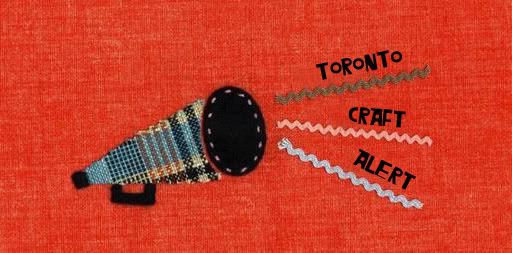




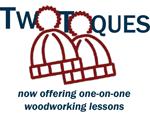

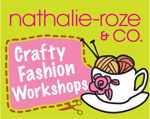




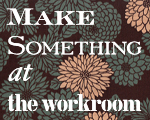



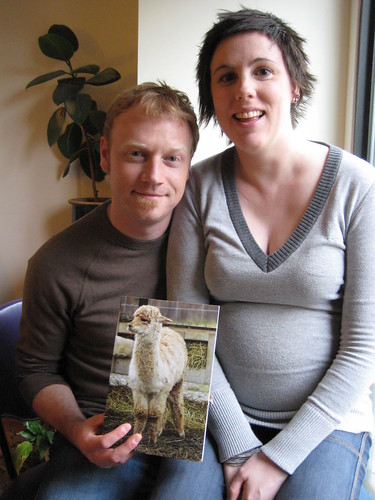
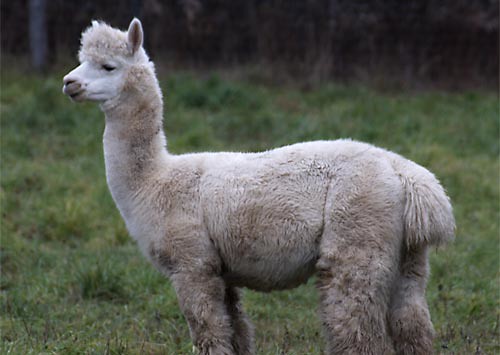



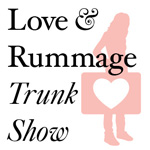




0 Comments:
Post a Comment
<< Home